Are you passionate about photography and looking for ways to monetize your skills? Selling photos online is a fantastic opportunity to generate income, whether you’re a seasoned professional or just starting out. The internet offers numerous platforms to connect your stunning images with buyers worldwide, turning your passion into profit.
The demand for high-quality visuals is constantly growing. Businesses, bloggers, publishers, and individuals are always seeking compelling images for websites, marketing materials, social media, and more. By understanding the online landscape and utilizing the right strategies, you can tap into this demand and build a successful online photo selling venture.
This guide, brought to you by dfphoto.net, your resource for expert photography insights, will explore the best avenues for selling your photos online. We’ll delve into popular platforms, provide actionable tips for success, and equip you with the knowledge to navigate the world of online photo sales effectively. Let’s embark on this journey to transform your photographic talents into a lucrative online business.
Top Platforms to Sell Your Photos Online
The digital marketplace is brimming with platforms designed to help photographers like you sell their work. These platforms vary in their approach, commission structures, and target audiences. Here are some of the best websites to consider when exploring how to sell your photos online:
1. Alamy
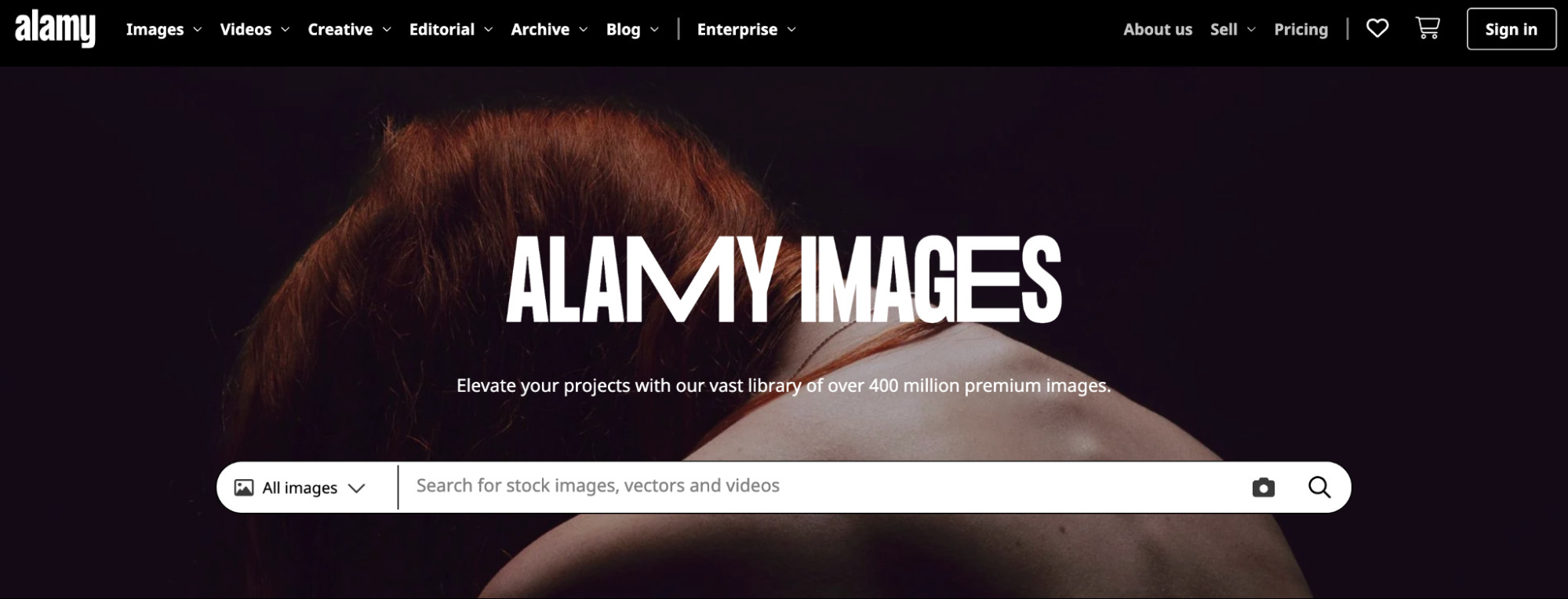 Alamy Images homepage showing a search bar for people to find royalty-free images.
Alamy Images homepage showing a search bar for people to find royalty-free images.
Alamy boasts one of the most extensive and diverse stock photo libraries online. This platform is a great option if you’re looking to expose your work to a broad audience. Alamy accepts a wide range of images, from stock photos to vectors, videos, and even 360-degree panoramic images, providing multiple avenues for you to contribute. They also offer the Stockimo app for iOS, enabling you to sell photos directly from your smartphone, perfect for photographers on the go.
Payment Structure: Alamy provides monthly payments with a commission model ranging from 17% to 50% of each sale. The commission percentage depends on factors like image popularity and license type. Notably, Alamy doesn’t require long-term contracts, and they support payments in various currencies, offering flexibility for contributors worldwide.
2. 500px
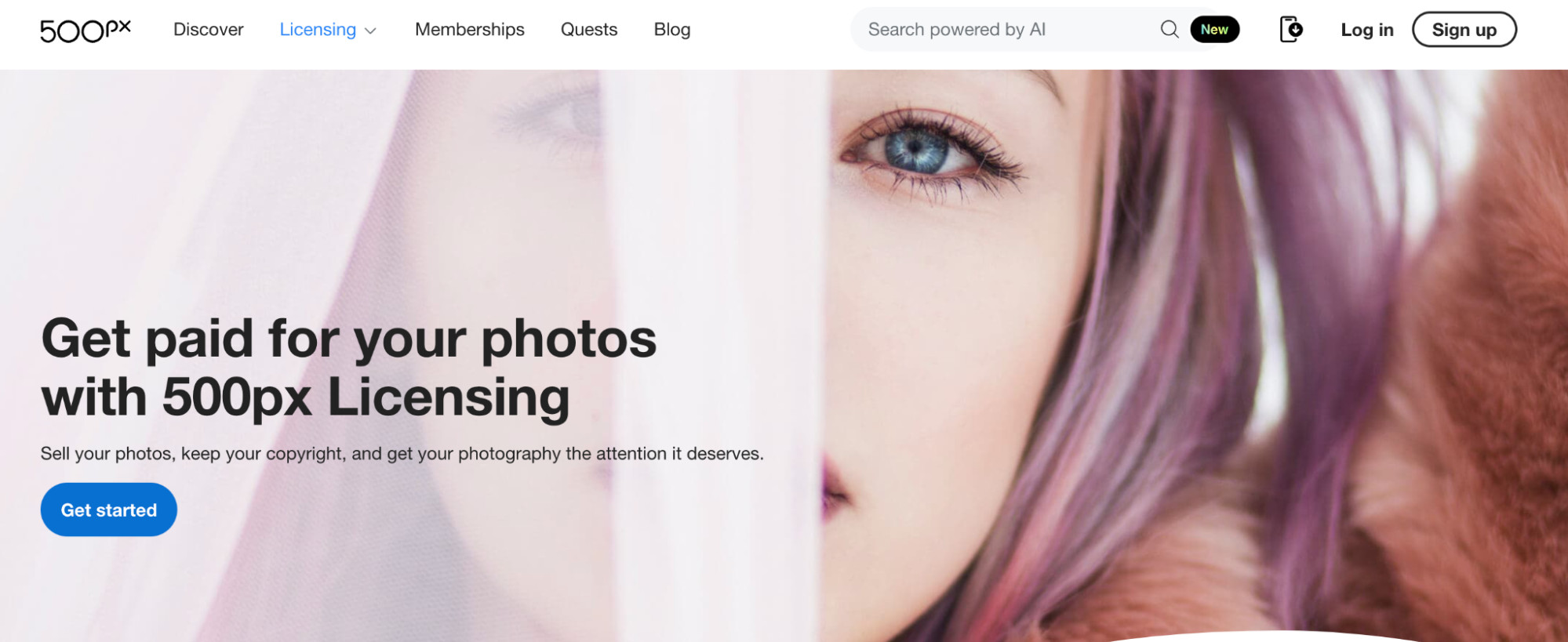 500px’s homepage that shows how contributors can get paid for their photos with licensing.
500px’s homepage that shows how contributors can get paid for their photos with licensing.
500px uniquely blends stock photo licensing with a vibrant photographer community. Hosting millions of photographers, 500px serves as both a marketplace and a social platform. Their “Pulse algorithm” plays a crucial role in showcasing new talent and photographs to potential buyers, leveling the playing field for emerging photographers, provided their images meet the platform’s quality standards. Beyond selling, 500px fosters a community where photographers can connect, receive feedback, participate in competitions, and gain recognition.
Payment Structure: For exclusive photos, paying members on 500px can earn up to 100% royalties, making it a highly attractive option for those seeking premium returns on their work.
3. Shutterstock
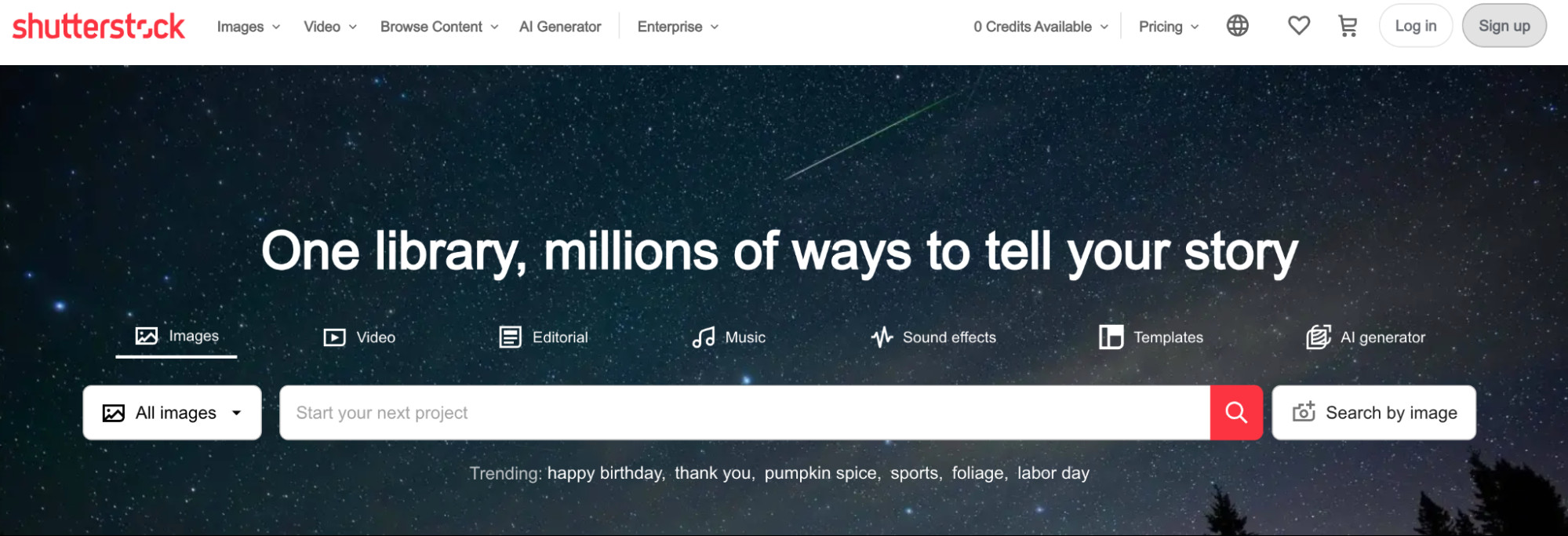 Shutterstock homepage that lets people find royalty-free images, video, and music.
Shutterstock homepage that lets people find royalty-free images, video, and music.
Shutterstock stands as one of the most globally recognized stock photography websites. It’s a powerhouse platform with a proven track record, having paid out over $1 billion to its contributor community in the last 15 years. Shutterstock operates as a micro-stock site, which means photos are typically priced lower and are often non-exclusive. Success on Shutterstock often comes from contributing a large volume of images to increase download potential. While individual image earnings may be lower compared to some platforms, the sheer volume can lead to substantial income, especially for those starting in stock photography.
Payment Structure: Shutterstock’s payout system is tiered, ranging from 15% to 40% commission, based on cumulative earnings over time. They also offer an affiliate program, providing an additional income stream for referring new photographers or customers to the platform.
4. Getty Images
 Getty Images’ homepage with a search bar that helps people find photos and images.
Getty Images’ homepage with a search bar that helps people find photos and images.
Getty Images is synonymous with premium stock photography. It attracts high-end brands and publishers seeking exclusive, high-impact images. Getty Images, along with its subsidiary microstock site, iStock, reaches an impressive 1.5 million customers worldwide. Maintaining its premium image, Getty Images has stricter submission standards compared to many other stock photo sites. Getting accepted as a contributor signifies a high level of photographic quality and professionalism.
Payment Structure: To become a Getty Images contributor, you need to apply with a portfolio of sample photos. Upon acceptance, photographers earn between 15% and 45% of the image’s license fee. This reflects the platform’s focus on high-value, exclusive content.
5. iStock
 Landing page for iStock that shows its generative AI-powered image creator.
Landing page for iStock that shows its generative AI-powered image creator.
iStock is an offshoot of Getty Images, offering a non-exclusive option for contributors. The key differentiator from Getty Images is that iStock allows for non-exclusive photos, meaning you can sell the same images on other platforms. This provides photographers with greater flexibility in managing their portfolio and maximizing their reach.
Payment Structure: Similar to Getty Images, you must apply to become an iStock contributor with a selection of your work. Commission rates also range from 15% to 45%, contingent on the specifics of your contributor agreement.
6. Stocksy
 Stocksy homepage with an art graphic of people in a library.
Stocksy homepage with an art graphic of people in a library.
Stocksy is known for its curated collection of authentic and high-quality stock photos. It’s particularly appealing to photographers seeking higher payouts and a more artist-centric approach. Stocksy offers an impressive 50% royalty for standard licenses and 75% for extended licenses. However, exclusivity is a requirement – photos accepted to Stocksy must be exclusive to their platform. As an artist-owned cooperative, Stocksy contributors are also part owners, giving them a voice in the business’s direction and a share in profits through patronage returns when the co-op is profitable.
Payment Structure: Stocksy pays contributors monthly via PayPal, Payoneer, or check, with a minimum payout threshold of $100.
7. Picfair
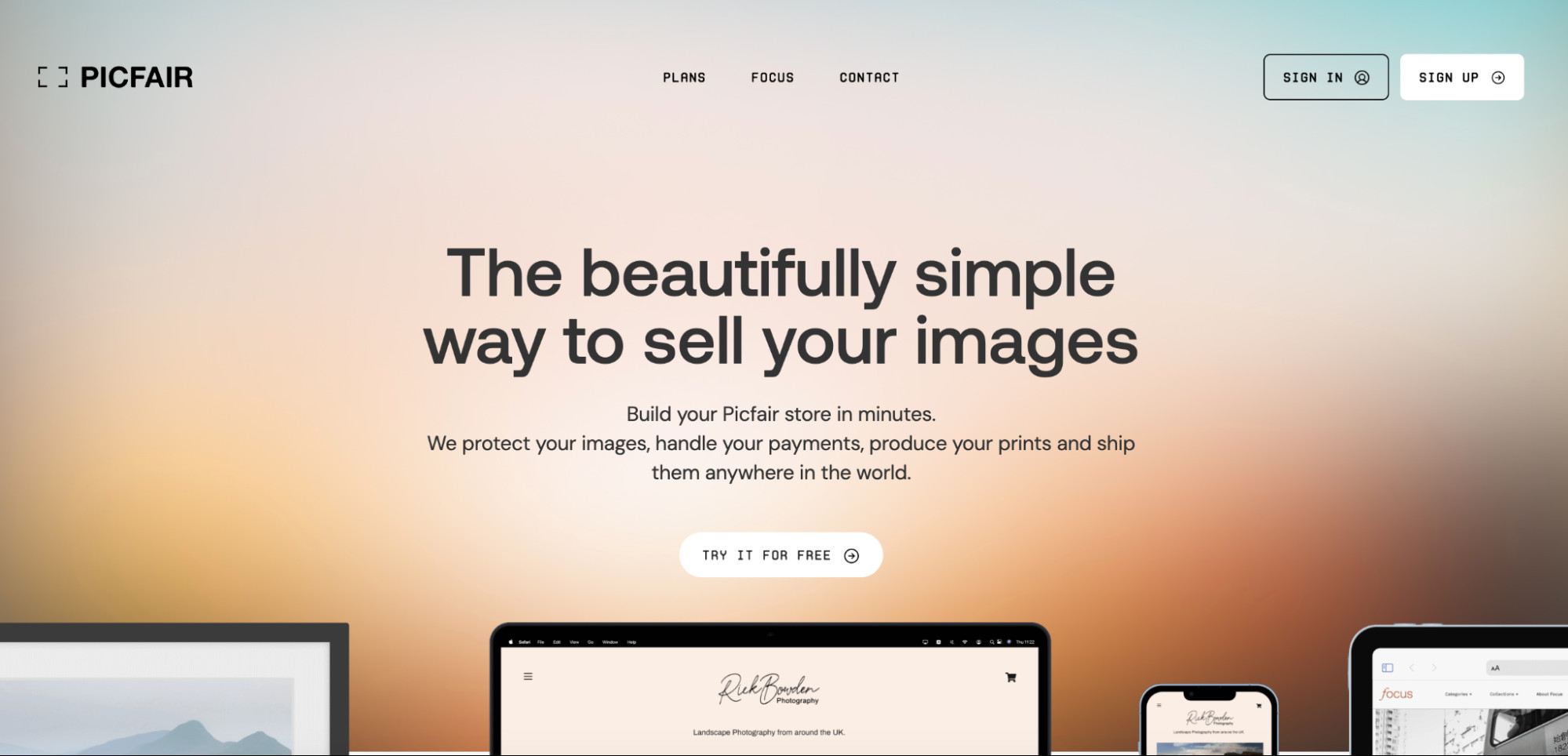 Picfair landing page for a website builder built for photographers.
Picfair landing page for a website builder built for photographers.
Picfair offers a unique approach by empowering photographers to create their own branded ecommerce websites. If you desire greater control over your online presence and pricing, Picfair is an excellent choice. You set your own prices for both digital downloads and prints, and Picfair handles payment processing, print production, shipping, and digital image licenses. This platform is ideal for photographers wanting to build their brand and directly manage their sales.
Payment Structure: Picfair operates on a subscription model. A Plus plan, priced at $5 per month when billed annually, allows you to create a custom Picfair store with up to 10,000 images for sale as prints or downloads.
8. Adobe Stock
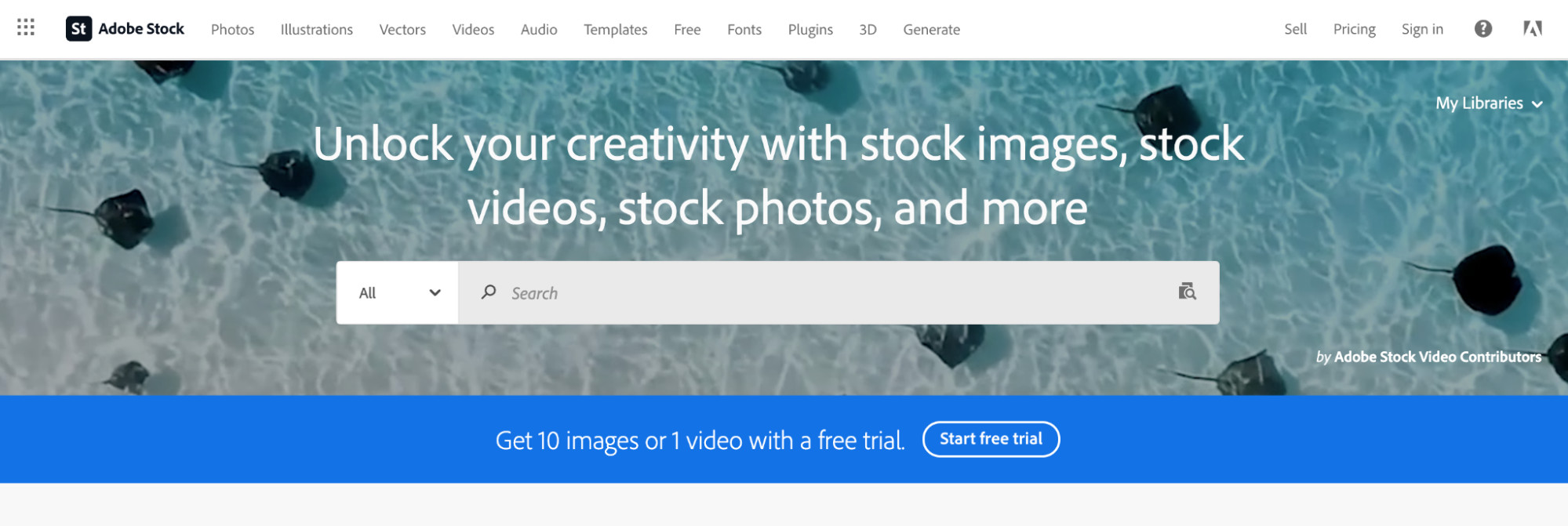 Adobe Stock homepage showing a search bar against a photo of sting rays in the ocean.
Adobe Stock homepage showing a search bar against a photo of sting rays in the ocean.
Adobe Stock seamlessly integrates with Adobe’s suite of creative software, a major advantage for photographers already using programs like Photoshop, Lightroom, and Bridge. You can directly contribute your photos, videos, vectors, and illustrations to Adobe Stock. This integration simplifies the workflow for Adobe Creative Cloud users, making it easy to upload and manage their stock content.
Payment Structure: Contributors who link their Adobe ID to Adobe Stock earn a 33% royalty on photo sales and 35% on video sales, offering a competitive commission rate within the stock photo market.
9. Envato Elements
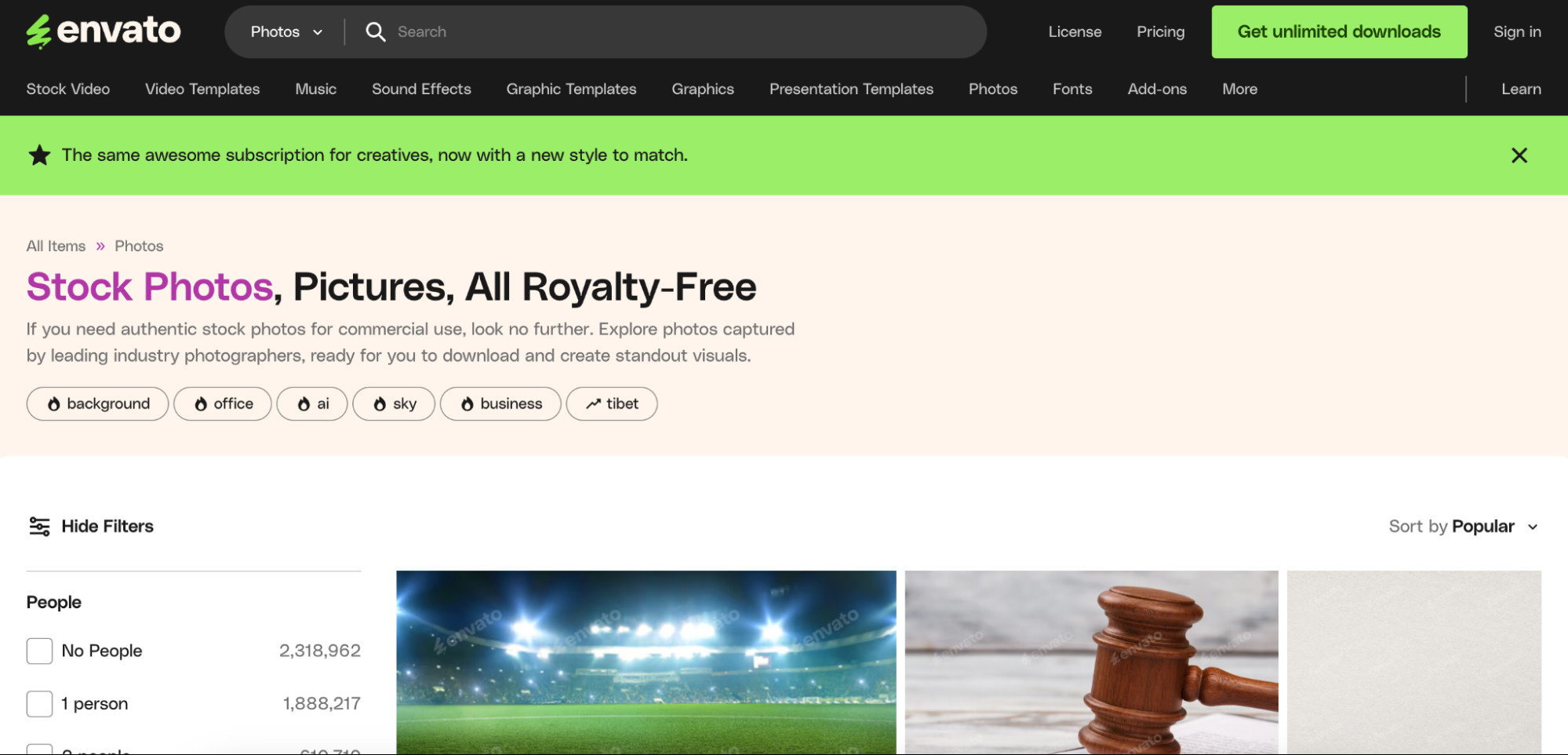 Landing page for stock photos on Envato Market.
Landing page for stock photos on Envato Market.
Envato Elements operates on a subscription-based model, offering customers unlimited downloads of creative assets, including stock photos. As a contributor, you earn a share of the total subscriber revenue. Envato Elements provides options to sell photos through their platform or integrate them into your own site using their domain, offering flexibility in how you present and sell your work.
Payment Structure: Contributors on Envato Elements earn between 25% and 50% of the net subscription revenue. This revenue-sharing model means your earnings are tied to the overall success of the Envato Elements subscription service.
10. Unsplash+
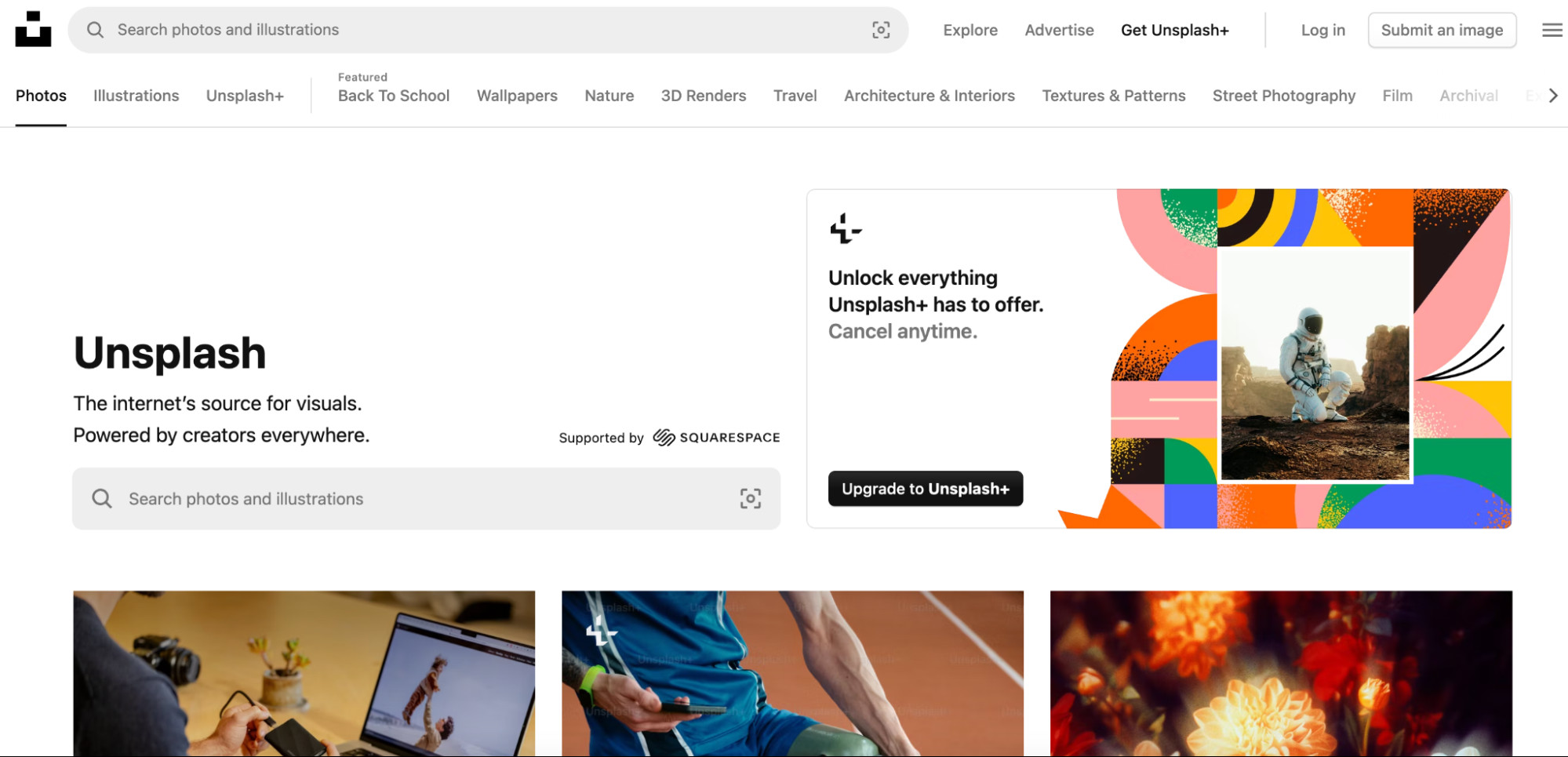 Unsplash homepage showing stock photos and a call-to-action for Unsplash
Unsplash homepage showing stock photos and a call-to-action for Unsplash
Unsplash+ is the premium arm of Unsplash, known for its vast library of free stock photos (also owned by Getty Images). Unlike traditional stock photo sites that pay per sale, Unsplash+ compensates photographers for submitting images that meet specific briefs or requests from clients. This model provides a more direct and assignment-based approach to earning on the platform.
Payment Structure: Once accepted as an Unsplash+ contributor, you gain access to briefs from Unsplash customers. You can choose briefs that align with your photographic style and submit relevant images. Payment rates for accepted images range from approximately $5 to $30 per image, depending on the brief and image usage.
11. Dreamstime
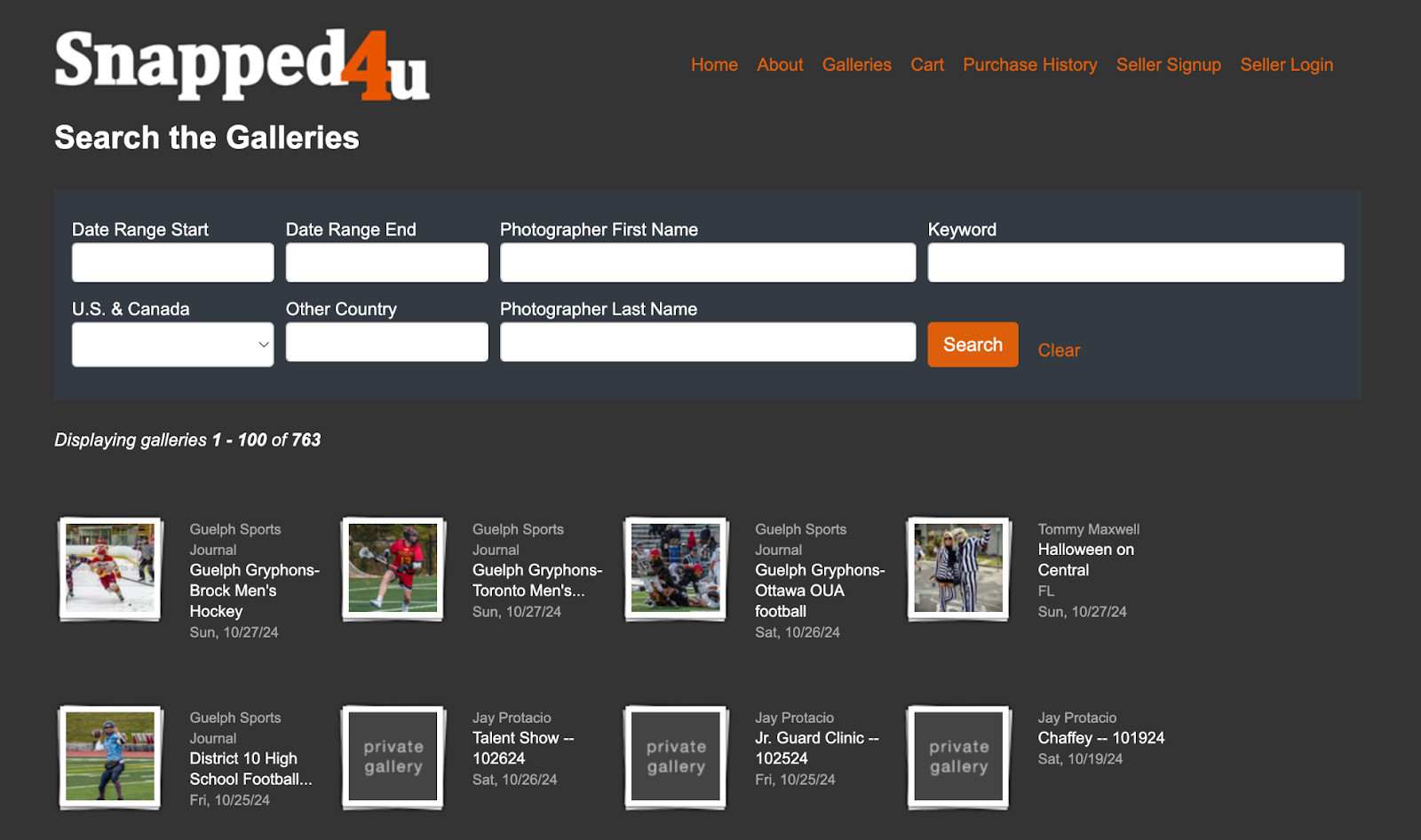 Snapped4U homepage showing photos from sports photographers
Snapped4U homepage showing photos from sports photographers
Dreamstime is a well-established microstock platform with a massive library of over 250 million royalty-free media files, including photos, vectors, videos, and audio. With a user base exceeding 50 million, Dreamstime offers photographers access to a large and active market for their work. It’s a platform that caters to a broad range of stock photo needs.
Payment Structure: Dreamstime offers revenue sharing from 25% to 50% for non-exclusive content. Exclusive contributors receive a higher commission, earning an additional 10% on sales, and also receive 20¢ for each approved submission. Dreamstime also has an affiliate program, offering 10% of transaction values for referred contributors or customers.
12. Snapped4U
 Foap creator landing page advertises a mobile app for photographers
Foap creator landing page advertises a mobile app for photographers
Snapped4U specializes in connecting event and portrait photographers with clients. It provides a marketplace for photographers to create personalized galleries, set their own prices (up to $20 per image), and sell digital files directly to their customers, often individuals who attended specific events or portrait sessions. Snapped4U is tailored for photographers focusing on event-based and portrait photography, not for those specializing in travel, landscape, or still-life photography.
Payment Structure: Snapped4U charges a one-time $10 registration fee and retains a commission between 10% and 12% on sales. Photographers receive their balance via PayPal on the 1st and 15th of each month.
13. Foap
 Foap creator landing page advertises a mobile app for photographers
Foap creator landing page advertises a mobile app for photographers
Foap distinguishes itself by enabling photographers to sell commercial-quality images directly to brands and individuals. A unique feature of Foap is “Missions,” where brands launch specific photo or video briefs, and photographers can participate by submitting relevant content for rewards. This direct-to-brand approach offers opportunities for higher earnings and collaborations.
Payment Structure: Foap’s “Mission” payouts range significantly from $100 to $2,000, depending on the mission and brand requirements. For photos sold on the general Foap market, Foap takes a 50% commission on all sales.
14. EyeEm
 EyeEm homepage with a search bar and examples of high-profile clients
EyeEm homepage with a search bar and examples of high-profile clients
EyeEm merges a photographer community with a stock photo marketplace. Like Foap, EyeEm offers “Missions” that invite photographers to submit images based on specific themes or client briefs. This community-driven approach can help photographers gain exposure and connect with potential buyers.
Payment Structure: EyeEm contributors earn a 50% commission on each sale made through the EyeEm marketplace. Payments are processed via PayPal.
15. Pond5 (for Videos)
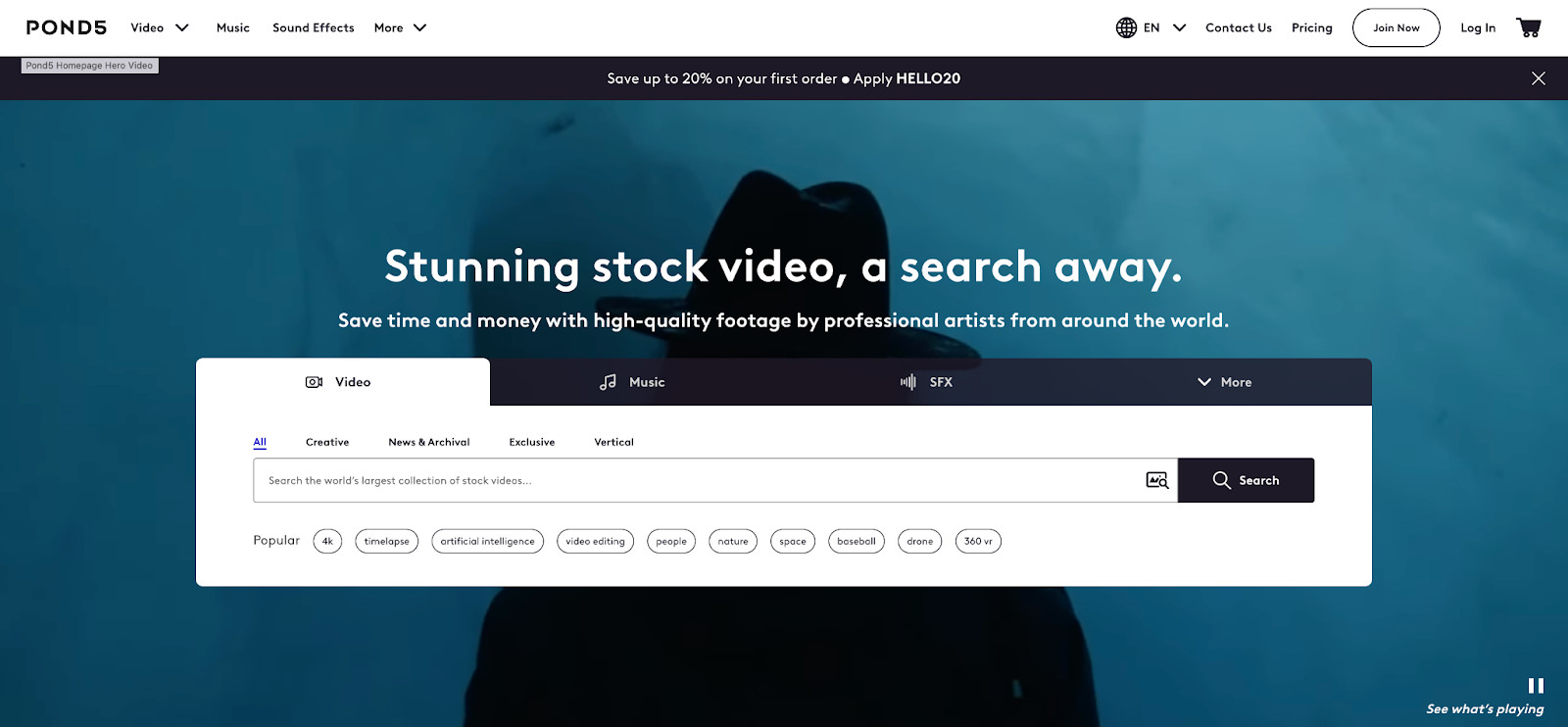 Pond5
Pond5
Pond5 stands out as a leading marketplace specifically for royalty-free videos, music, sound effects, and other media assets. While this article focuses on photos, Pond5 is a valuable platform for photographers who also create video content. With a client base including major names like the BBC and Disney, Pond5 offers access to high-profile buyers for your video work.
Payment Structure: Video artists on Pond5 earn a 40% royalty share, with the option to increase earnings up to 60% by making content exclusive to the platform. Pond5 also offers a referral program for additional income opportunities.
Essential Tips for Selling Photos Online Successfully
Choosing the right platform is just the first step. To truly thrive in the online photo selling market, consider these key strategies:
Define Your Photography Niche
Specialization can be your superpower. Many successful photographers develop a distinct style or focus on specific themes. Whether your passion is travel, portraits, food, or nature, consistency in your portfolio helps you attract a target audience. Finding a niche involves identifying subjects and styles you enjoy shooting that also resonate with potential buyers. Keyword research tools can help you gauge the demand for different photo topics, allowing you to make data-driven decisions about your niche. Google Trends is a valuable starting point to see trending image topics.
Leverage Instagram
In today’s visual world, social media is indispensable. Platforms like Instagram are powerful tools for photographers looking to sell images online. Building an engaged audience on Instagram can significantly increase your visibility and reach potential buyers. Utilize Instagram tools to optimize your presence, engage with relevant hashtags, and connect with potential customers. Linking your social media accounts streamlines content sharing and amplifies your online reach.
Integrate Ecommerce into Your Website
For greater control and higher profit margins, consider selling directly from your own website. If you already have a photography website showcasing your portfolio, adding ecommerce functionality can transform it into a sales engine. Platforms like Shopify offer Buy Buttons that seamlessly integrate into your site, enabling customers to purchase your photos directly. Photographer Dave Sandford is a great example, using his website to showcase and sell his stunning wildlife photography as prints and calendars.
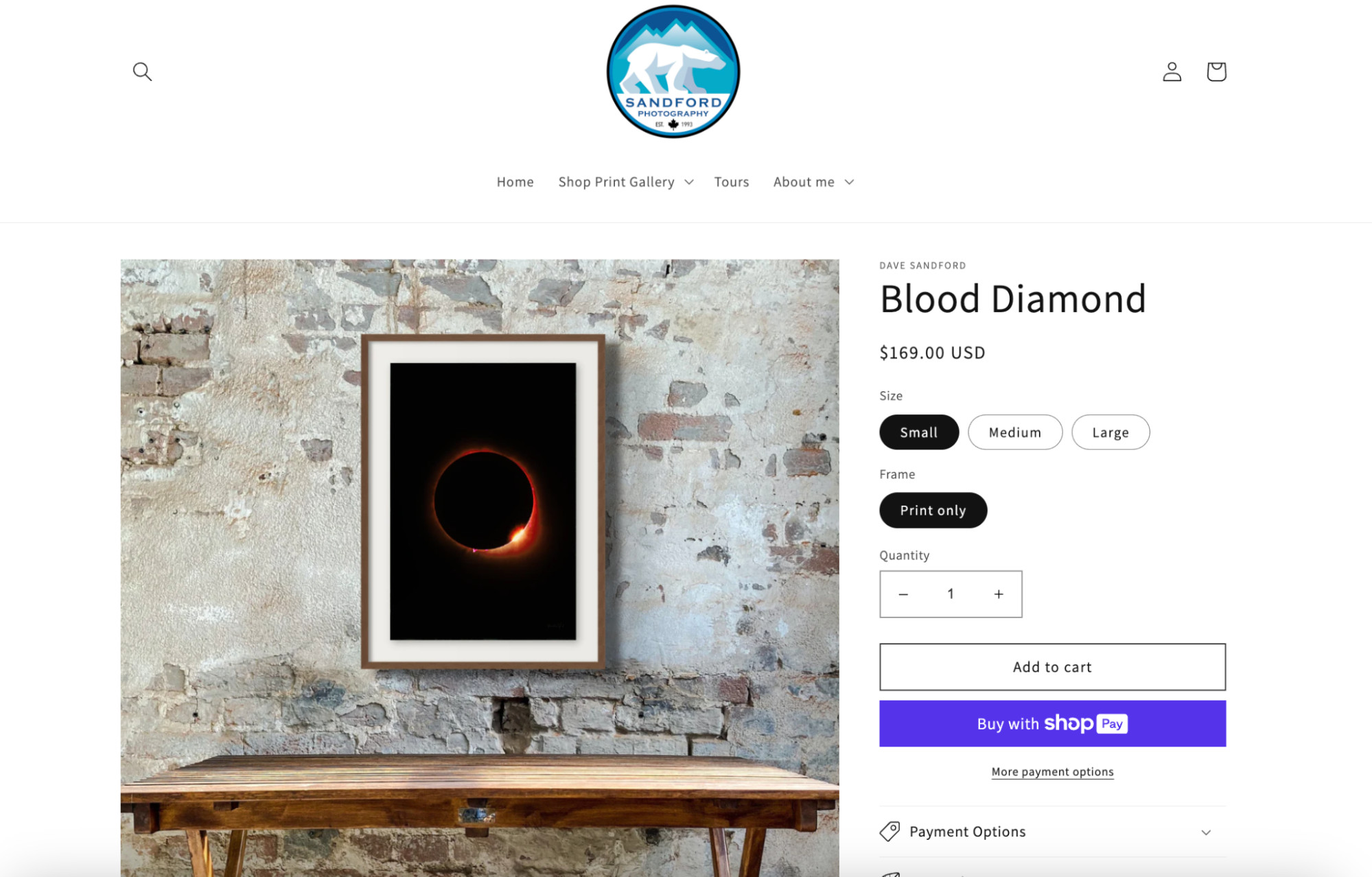 Product page for a print of a moon with a red border against a black background.
Product page for a print of a moon with a red border against a black background.
Creating a personalized portfolio page or online store on Shopify is a user-friendly way to start selling photos directly. Utilize pre-designed art and photography themes to quickly set up your digital storefront, or combine a free theme with a gallery app for enhanced visual presentation.
Understand Your Target Market
Knowing your target market is crucial for creating photos that sell. Your target market is the specific group of people who are most likely to purchase your images. Understanding their needs, interests, and buying habits allows you to tailor your photography to meet their demands. For instance, if you specialize in wedding photography, your target market for stock photos might not be couples getting married, but rather wedding industry suppliers like stationery brands or suit retailers seeking images for their marketing materials. By understanding this buyer persona, you can create images that resonate with their needs and sell them on platforms where they are actively searching for stock photos, at a price point they are willing to pay.
Setting Up Your Online Portfolio: A Step-by-Step Guide
Your online portfolio is your visual resume. It’s where potential buyers assess your style and quality. Follow these steps to create a compelling portfolio that converts visitors into customers:
1. Choose the Right Platform
The “best” platform depends on your goals and desired level of control. Consider these options:
- Hobby or Passive Income: For casual selling and generating supplementary income, stock photo sites like iStock or Alamy are ideal.
- Brand Assignments: To receive direct assignments from brands without pitching, Unsplash+ offers a unique opportunity.
- Full Control Photography Business: For complete control over branding, pricing, and customer relationships, an ecommerce platform like Shopify is the most robust solution.
2. Plan Your Portfolio’s Structure
A well-structured portfolio enhances user experience and search engine visibility. Focus on these elements:
- Layout: Photos should be the focal point, but include concise descriptions to provide context and improve SEO.
- Social Proof: Incorporate testimonials or examples of how your images have been used to build credibility.
- Categories and Organization: Use tags and categories to help visitors easily browse and find specific types of images. For nature photography, categorize by location, subject, or season.
- Gallery Size: Curate your portfolio to showcase only your best work. Quality over quantity is key. Remove any images you are not completely satisfied with.
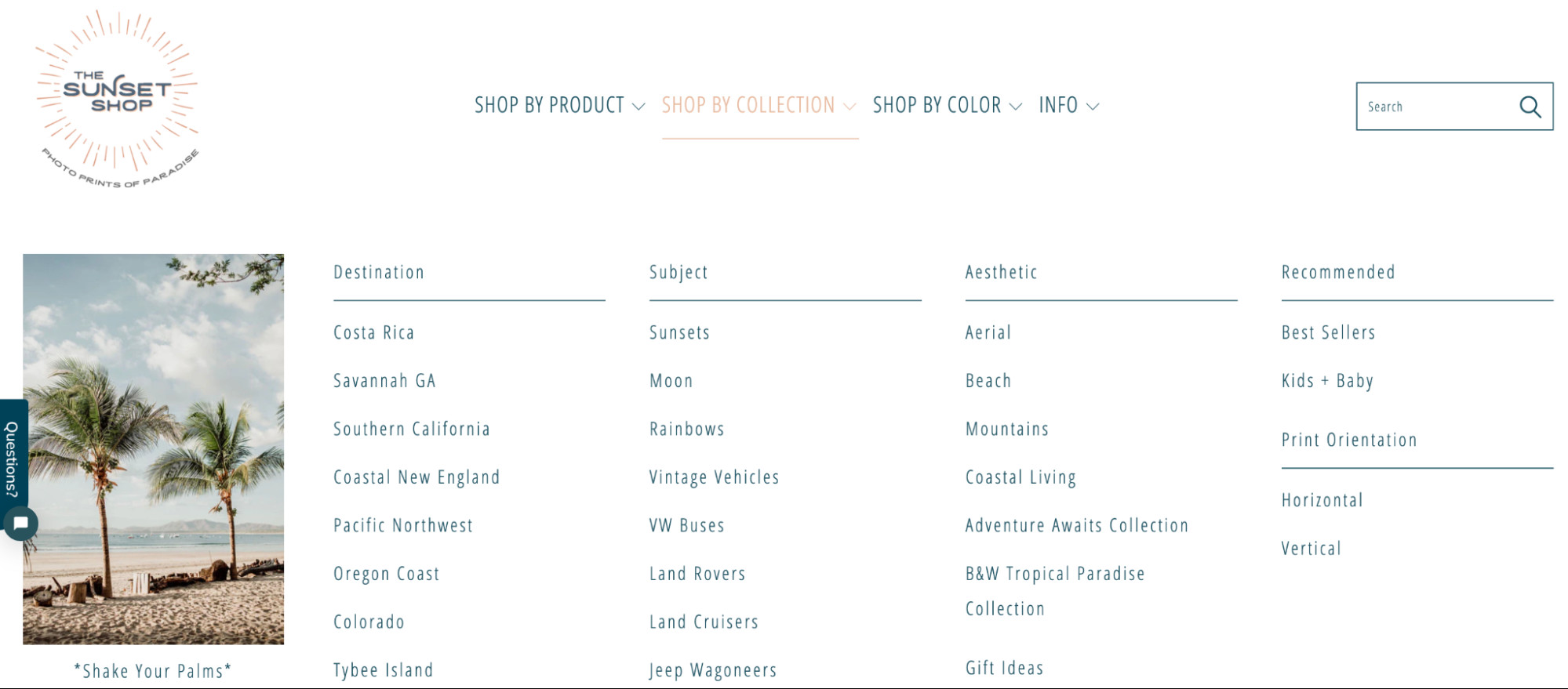 Example product categories on a photo print website include “Costa Rica”, “Sunset”, and “Mountains”.
Example product categories on a photo print website include “Costa Rica”, “Sunset”, and “Mountains”.
The Sunset Shop effectively uses categories to organize photos by type, aesthetic, and destination, improving user navigation.
3. Optimize Images for the Web
Website speed is crucial. Large, unoptimized images can significantly slow down your site and negatively impact user experience. Optimize your images for web performance without sacrificing visual quality:
- Compress Image Sizes: Aim for a compression rate between 60% and 80% to reduce file size while maintaining acceptable quality.
- Use Descriptive File Names: Instead of generic filenames like “IMG_3542.jpg,” use descriptive names such as “summer-evening-nature.jpg” for better SEO.
- Write Alt Text: Add descriptive alt text to each image. This text helps search engines understand your photos and improves accessibility for users with screen readers.
4. Create an Engaging About Page
People connect with stories. An About page helps build trust and allows potential customers to learn more about you and your photography journey. Share your passion, how you got started, your inspirations, and what makes your work unique. This personal touch can be a significant factor in purchase decisions.
5. Implement Ecommerce Functionality
An ecommerce platform simplifies the process of selling photos online, handling the logistics of transactions. Using Shopify, for example, provides you with tools to:
- Create an online storefront for self-service purchasing.
- Integrate with social media storefronts like Instagram Shop.
- Securely process payments and manage taxes.
- Handle digital or physical product delivery.
- Manage marketing campaigns and promotions.
 Product page for a 5×7 printed photo of a beach.
Product page for a 5×7 printed photo of a beach.
The Bee & The Fox successfully uses Shopify to sell photography prints online, illustrating the platform’s capabilities for photo ecommerce.
6. Ensure Mobile Compatibility
Mobile browsing dominates internet traffic. Ensure your portfolio is fully mobile-responsive to provide a seamless experience for all visitors. This includes:
- Responsive website design that adapts to different screen sizes.
- Vertical image display optimized for mobile viewing.
- Large, finger-friendly buttons and navigation.
7. Launch and Promote Your Photos
Once your portfolio is ready, it’s time to get the word out. Utilize these marketing tactics to promote your photos:
- Share images on social media platforms.
- Pin photos on Pinterest, linking back to your portfolio.
- Offer free prints to relevant influencers for promotion.
- Create behind-the-scenes content on TikTok, YouTube, or Instagram Reels.
- Build an email list by offering discounts to website visitors.
Expanding Your Sales: Prints and Photo Books
Beyond digital licenses, selling physical products featuring your photography can open up new revenue streams.
Selling Photos as Prints and Physical Products
Offering prints, mugs, t-shirts, calendars, and other merchandise featuring your photos can be highly profitable. Consider partnering with a local photo lab for print fulfillment and shipping, or use a print-on-demand company to dropship a wider range of products. Always order samples to ensure product quality aligns with your photographic standards.
Creating and Selling Photo Books
Photo books are another compelling physical product, especially for photographers with a cohesive niche or theme. If your photography tells a story, a photo book can be a valuable offering. Print-on-demand services provide a risk-free way to test demand before investing in larger print runs.
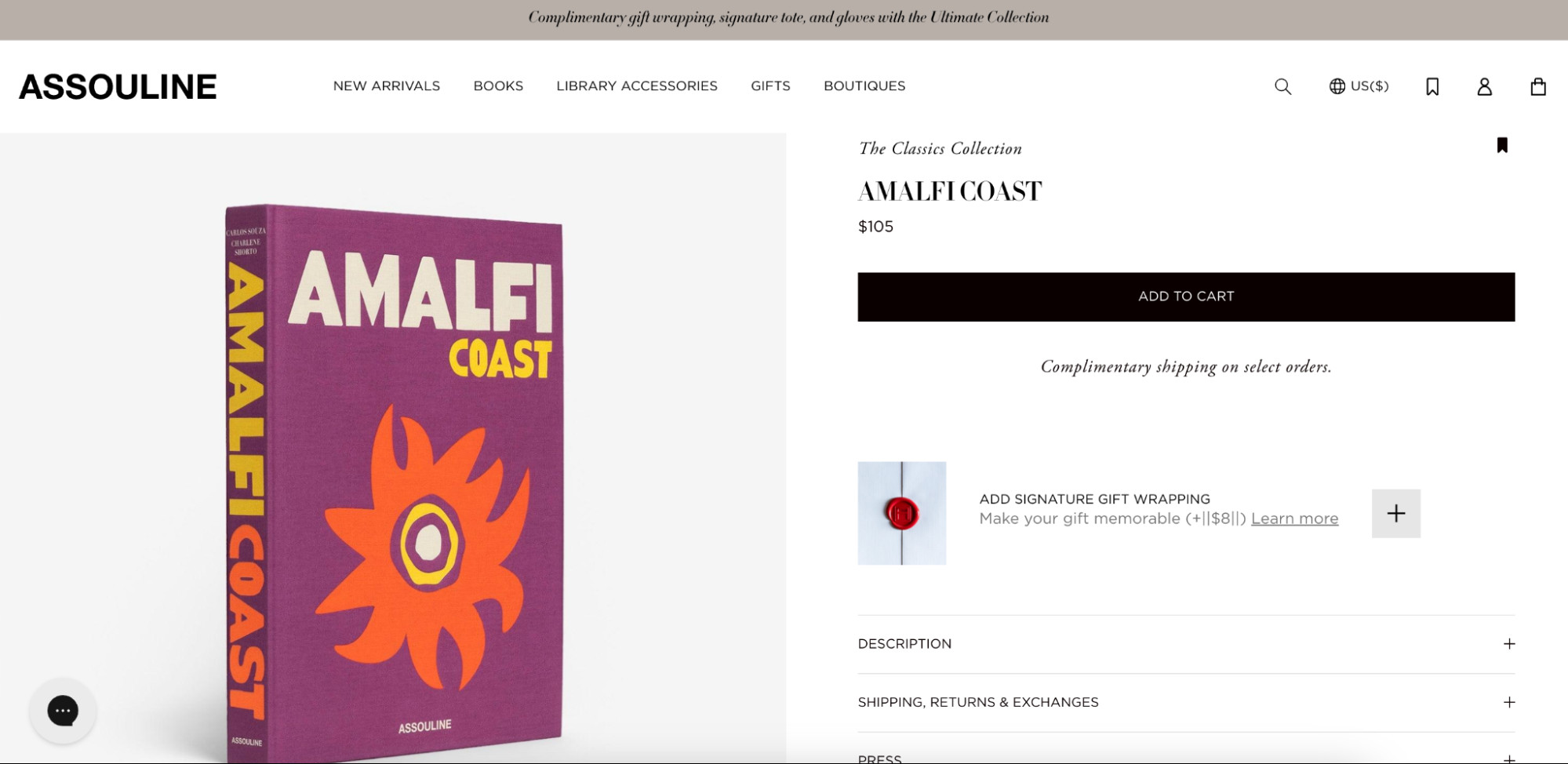 Photobook of images taken on the Amalfi Coast.
Photobook of images taken on the Amalfi Coast.
Assouline exemplifies the market for premium photo books featuring destination-based photography.
Selling Your Photography Services
Beyond stock photos and products, you can also sell your photography services directly. Whether it’s event photography, fashion shoots, or product photography, numerous opportunities exist for professional photographers. List your services on freelance platforms like Fiverr and Upwork, and network locally.
Networking Tips:
- Always carry business cards (use Shopify’s free business card generator).
- Optimize your LinkedIn profile, highlighting your specialty.
- Attend industry networking events.
- Build your personal brand through consistent social media sharing.
For service-based photography, a booking platform is essential. Platforms like Setmore and SimplyBook.me offer free plans with features suitable for photographers. If you use Shopify, consider adding a scheduling app for direct bookings through your site.
Pricing Strategies for Online Photo Sales
Effective pricing is critical for profitability. Here’s how to develop a pricing strategy for your photography business:
- Market Research: Research competitor pricing and survey your target market to understand price expectations.
- Profit Margins: Calculate your costs (equipment, website, marketing) to ensure your pricing covers expenses and generates profit.
- Usage-Based Pricing: Charge higher prices for exclusive licenses and lower prices for non-exclusive, royalty-free options.
- Discounts and Promotions: Offer introductory discounts or loyalty rewards to incentivize purchases.
- Product Bundles: Sell image collections at discounted prices to increase average order value.
Legal Considerations for Selling Photos Online
Understanding legal aspects is vital to protect your work and avoid legal issues.
Key Legal Terms:
- Editorial Use: For use in news, blogs, and publications.
- Commercial Use: For marketing and advertising.
- Retail Use: For physical products for sale.
- Exclusive Use: Buyer has sole usage rights.
- Non-Exclusive Use: Multiple licenses can be sold for the same photo.
- Public Domain: No copyright restrictions.
- Creative Commons: Conditional usage with stated restrictions (attribution may be required).
- Royalty Free: Unlimited usage after license purchase.
- Rights Managed: One-time use license with restrictions.
- Right of Publicity: Permission needed from recognizable subjects for commercial use.
Protecting Your Photos from Theft
Watermarking your digital images before selling is a crucial step in preventing unauthorized use. Use Photoshop or a watermark generator to add watermarks. If you discover unauthorized use of your photos, issue a cease and desist request or send an invoice for usage fees. Always strive to receive credit when your work is used, even for editorial purposes, as backlinks to your portfolio improve SEO and drive traffic.
Conclusion
Selling photos online offers a world of opportunities for photographers of all levels. By choosing the right platforms, implementing effective marketing strategies, understanding your market, and navigating the legal landscape, you can turn your passion into a profitable online business. Whether you opt for stock photo sites, build your own ecommerce store, or offer prints and services, the key is to start, experiment, and continuously refine your approach. The demand for compelling visuals is ever-present, and with dedication and the right knowledge, you can successfully sell your photos online and achieve your financial and creative goals.
How to Sell Photos Online FAQ
What is the best way to sell photographs?
Selling photos as stock images on third-party platforms like iStock, Shutterstock, or Alamy is often the quickest and most accessible way to start selling photographs online. These platforms provide established marketplaces and reach a broad customer base.
Where can I sell my photos online for money?
Numerous websites offer opportunities to sell photos online, including:
- Alamy
- 500px
- Shutterstock
- Getty Images
- iStock
- Stocksy
- Picfair
- Adobe Stock
- Envato Elements
- Unsplash+
- Dreamstime
- Snapped4U
- Foap
- EyeEm
- Pond5 (for videos)
How do you make money from stock photography?
Stock photography websites act as intermediaries, licensing your uploaded images to clients. When a client purchases a license for your photo, you, as the photographer, receive a royalty payment, typically a percentage of the sale price. The stock agency handles marketing, sales, and licensing, while you focus on creating high-quality images.